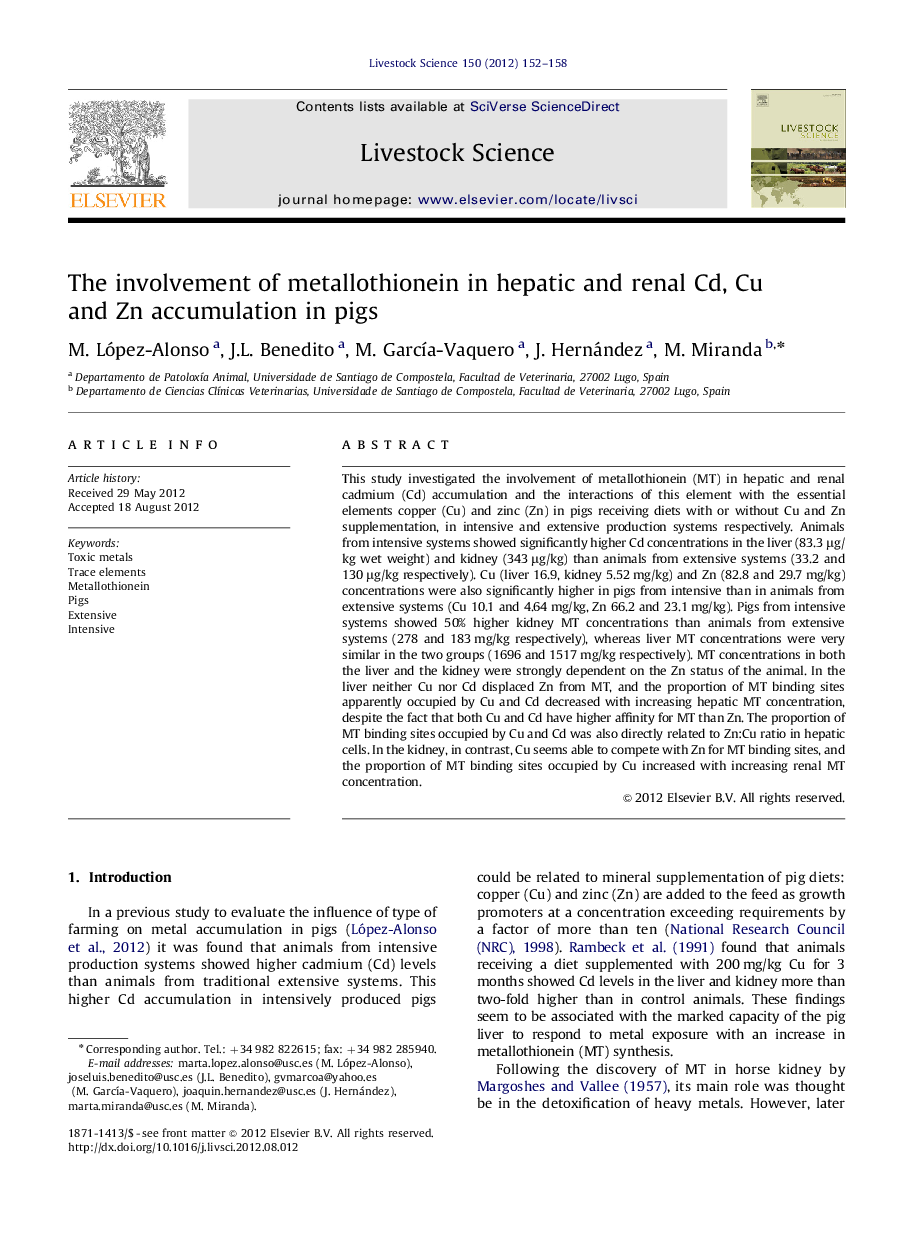| Article ID | Journal | Published Year | Pages | File Type |
|---|---|---|---|---|
| 5790486 | Livestock Science | 2012 | 7 Pages |
Abstract
This study investigated the involvement of metallothionein (MT) in hepatic and renal cadmium (Cd) accumulation and the interactions of this element with the essential elements copper (Cu) and zinc (Zn) in pigs receiving diets with or without Cu and Zn supplementation, in intensive and extensive production systems respectively. Animals from intensive systems showed significantly higher Cd concentrations in the liver (83.3 μg/kg wet weight) and kidney (343 μg/kg) than animals from extensive systems (33.2 and 130 μg/kg respectively). Cu (liver 16.9, kidney 5.52 mg/kg) and Zn (82.8 and 29.7 mg/kg) concentrations were also significantly higher in pigs from intensive than in animals from extensive systems (Cu 10.1 and 4.64 mg/kg, Zn 66.2 and 23.1 mg/kg). Pigs from intensive systems showed 50% higher kidney MT concentrations than animals from extensive systems (278 and 183 mg/kg respectively), whereas liver MT concentrations were very similar in the two groups (1696 and 1517 mg/kg respectively). MT concentrations in both the liver and the kidney were strongly dependent on the Zn status of the animal. In the liver neither Cu nor Cd displaced Zn from MT, and the proportion of MT binding sites apparently occupied by Cu and Cd decreased with increasing hepatic MT concentration, despite the fact that both Cu and Cd have higher affinity for MT than Zn. The proportion of MT binding sites occupied by Cu and Cd was also directly related to Zn:Cu ratio in hepatic cells. In the kidney, in contrast, Cu seems able to compete with Zn for MT binding sites, and the proportion of MT binding sites occupied by Cu increased with increasing renal MT concentration.
Related Topics
Life Sciences
Agricultural and Biological Sciences
Animal Science and Zoology
Authors
M. López-Alonso, J.L. Benedito, M. GarcÃa-Vaquero, J. Hernández, M. Miranda,
